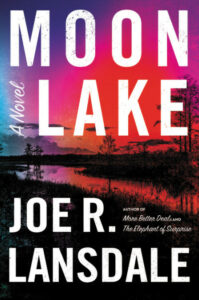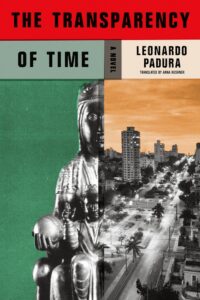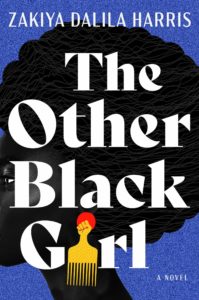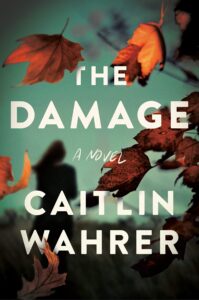A look at the month’s best reviewed crime novels, mysteries, and thrillers.


Laura Lippman, Dream Girl (William Morrow)
“The gifted Ms. Lippman, in this tale of a talented cad who more or less gets what he deserves, shifts between passages hard-boiled and satirical. Dream Girl offers a healthy dose of suspense and wittily skewers literary life.”
–Tom Nolan (Wall Street Journal)

Sarah Stewart Taylor, A Distant Grave (Minotaur)
“… a fast-paced, tension-filled yarn filled with twists the reader is unlikely to see coming. Taylor tells the story in a lyrical prose style that is a joy to read. She excels in vividly portraying both the rural Ireland and Long Island settings and in developing memorable characters including D’arcy’s partner, Dave Milich, and her troubled daughter, Lilly.”
–Bruce DeSilva (Associated Press)

Joe R. Lansdale, Moon Lake (Mulholland)
“Lansdale has long been a master of blending realistic human drama with elements of horror, and he’s at it again here, in what Daniel calls a ‘Gothic gumbo’ that layers a coming-of-age story within a plot encompassing ritualistic murder and racism at its most virulent.”
–Bill Ott (Booklist)

P.J. Vernon, Bath Haus (Doubleday)
“I often thought about our sex rules as I read P. J. Vernon’s second novel, Bath Haus, a smart, steamy thriller laced with heady questions about control and shame. As the pages flew by, my mind drifted from the tribulations of its protagonist, Oliver Park, to the cultures in which such stories ferment.”
–Daniel Nieh (The New York Times Book Review)

Leonardo Padura, The Transparency of Time (FSG)
“Padura, who seemingly never met a digression he didn’t like, devotes considerable space to Conde’s quotidian life. As a result, the pace of the novel is slow, but the characterization is acute. Conde is likable, and the Cuban setting is the real star of the novel, which will appeal to Padura’s many fans.”
–Michael Cart (Booklist)

Zakiya Dalila Harris, The Other Black Girl (Atria)
“…occasional chapters seem to rise out of nowhere, but they are actual plot thickeners, devices that will ultimately take The Other Black Girl out of the realm of ‘office novel’ and into another genre entirely, and finally toward a kind of sad and wholly earned brilliance … Harris…has a great deal to say about what it means to be a woman in the workplace—and how wrong it is to refer to women as ‘girls.’ One of the best scenes in The Other Black Girl takes place in a salon, with dozens of women of different ages trying out new coiffures. It’s not a coincidence that the central conceit of the book has to do with hair, that longstanding preoccupation of the femme. Harris makes her entrance as an author with singular style. Whatever she does next might seem quieter, but watch for it: It will be brilliant.”
–Bethanne Patrick (NPR)

Christine Mangan, Palace of the Drowned (Flatiron)
“… a perceptive character study. Mangan’s accomplished second novel spins on low-boil psychological underpinnings, with a threat of violence … The complicated dynamic between the two women, based on lies, secrets and jealousy, propels the story. Venice emerges as a strong character, with Mangan skillfully exploring the city’s myriad facets … also works well as a sophisticated story about friendship, the creative process and loving the unlovable.”
–Oline H. Cogdill (Shelf Awareness)

Catherine Steadman, The Disappearing Act (Ballantine)
“… engrossing … Steadman deftly brings her talent for characterization to her writing, combining an engaging mystery with a meaty look at the question of what is real in a land of make-believe. This glittering narrative with a totally beguiling protagonist makes for an absolutely perfect beach read.”
–Jane Murphy (Booklist)

James Ellroy, Widespread Panic (Knopf)
“Widespread Panic is not so much a reading experience as an immersion into a time (the 1950s) and place (Los Angeles). The events described by author James Ellroy become more real by virtue of his (occasional) exaggeration in a work that is ostensibly historical fiction. Even the prose that he spits out staccato-style is more than what it appears to be. His sentences are usually short and loaded with alliteration, even as they are cringe-inducing in content and description, designed to elicit enough cuts and bruises to exhaust a giant box of wholesale club bandages. In Widespread Panic, they trample readers and then merrily drag them along … The stories — particularly those that never saw the light of day — are graphic, stunning and in many instances hilarious … No punches are pulled, and no literary expense is spared. Just to prove that too much of a good thing does not exist, Ellroy is working on a sequel to this book. Please, sir. Write quickly. And don’t forget Bob Crane.
–Joe Hartlaub (Bookreporter)

Caitlin Wahrer, The Damage (Pamela Dorman)
“Unlike a traditional mystery, we know who Nick’s attacker is within the first few chapters. The real mystery in The Damage is what happens after the assault. The book jumps between the months after the 2015 attack to 2019, when the detective assigned to the case, now facing a terminal diagnosis, looks for answers as to what really happened in the aftermath. The man suspected of Nick’s attack has long since vanished, and the detective believes Julia may know the truth. The Damage stands out for its depiction of the still taboo subject of male rape … The Damage carefully and expertly captures the collective trauma of a close-knit family when one of its members is victimized, and the lengths to which they’ll go to find justice and healing.”
–Elyse Discher (Bookpage)

















